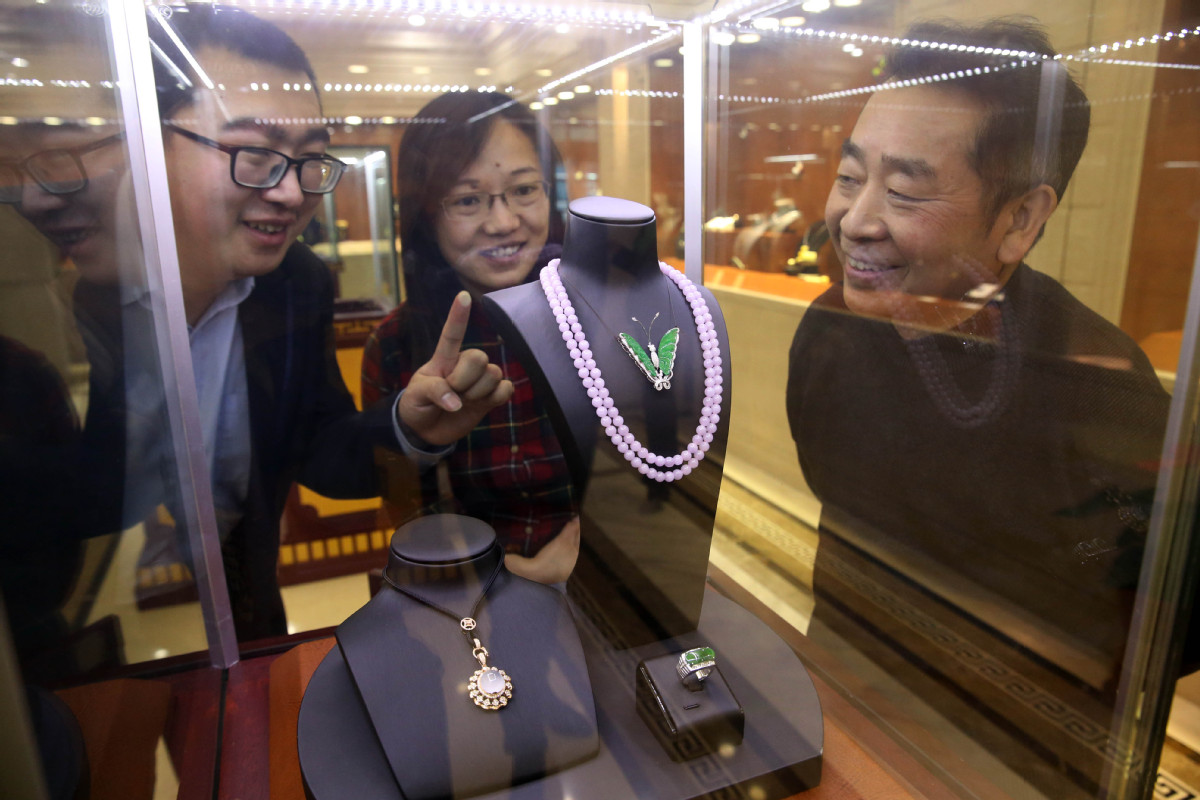All that glitters is jewelry bought via e-commerce


China's jewelry industry, which has been laid low by a downtrend over the last few years, is embracing e-commerce to keep pace with changing consumer tastes.
New data from the China Gold Association showed a growing appetite for jewelry starting from 2017, especially in less affluent cities.
Sales of gems and pricy metals climbed 9.4 percent to 1,089 metric tons this year so far, presenting a huge turnaround from that of 2016, when the demand dropped by 6.7 percent.
"E-commerce boom is fueling the jewelry industry turnaround," said Neil Wang, president of consulting firm Frost & Sullivan China. "More traditional jewelry groups such as Chow Tai Fook, Chow Tai Seng and Swarovski have stepped into the online retail business, where they saw a better performance.
"Consumers are getting more used to purchasing jewelry online due to convenience and the same quality compared with products from local stores."
Wang further said female consumers aged 20 to 40 are the most active group who prefer online shopping.
According to Alibaba, China's e-commerce giant that launched live streaming on its online shopping platform Taobao in 2016, about 80 percent of the viewers are female.
Live-streaming services, or online broadcasts where consumers can comment and shop as they watch, are welcomed by more Chinese and global brands as they think the services will open larger business opportunities.
Despite the dominant role of female consumers in the jewelry market, males and millennials, too, are becoming an increasingly important force in online jewelry purchases, according to data from the International Gemological Institute.
The trend brings in an inevitable change to the current jewelry industry, as millennials prefer less pricy products with good designs.
Data from the Gold Demand Trends report released by the World Gold Council showed that millennials and younger consumers are buying less of 24-karat gold jewellery and are more likely to buy lower grade varieties that are cheaper but offer more latest designs, leading to a decline in gold demand.
Demand for pricy jewelry, like that made of gold and platinum, is shifting to China's lower-tier cities as the newly accumulated wealth spreads to less affluent areas from more developed coastal cities, according to South China Morning Post.
In response to the changing consumption patterns, Hong Kong-listed Chow Tai Fook, China's largest jeweler by market capitalization, launched a series of 22k or 18k gold products, those that are less pure but more affordable for younger consumers.
The industry also faces great challenges from luxury alternatives as an increasing number of middle-income consumers in China have a preference for globally well-known brands.
"Instead of estate jewelry (pre-owned jewelry, usually bought from private estates and is often antique or vintage in nature, given its higher end features like fine workmanship and high-quality stones) some consumers want to show off their wealth, cultivate a sense of an upgraded lifestyle, or express themselves," said a report from global consulting firm McKinsey. "Either way, they drive the growth of branded jewelry."
As e-commerce shows an increasingly important presence in the jewelry industry, digital marketing is also seeing a surge.
"Consumer behaviors are analyzed through e-commerce platforms as the tech giants are fully capable of launching big data analysis," said Wang.
The development of data analytics helps digital marketing to better target audiences, after knowing their purchase patterns and preferences.
According to Alibaba, its consumers shop largely between 8pm and 10pm, making the time range a golden period for digital ads.
Wang said the development of data analysis also brings new opportunities for both business owners and jewelry e-commerce platforms. The latter can apply the results to product design and development. That would help generate higher sales. Insights from analysis can also help discover new growth potential based on evolving market trends.




































